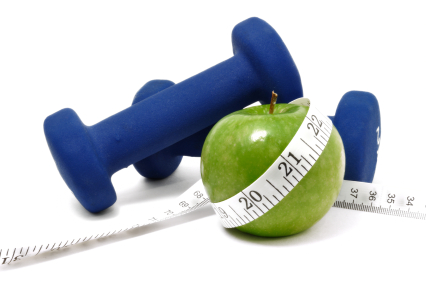When it comes to weight loss trends, there are thousands that have once been the ‘next big thing’. None of the weight loss fads, however, are as interesting as the hCG diet.
HCG plays many roles in pregnancy, but is mainly responsible for making sure that the developing fetus receives the nutrients and calories it needs to grow. These calories that are provided to the fetus are practically independent of the mother’s caloric intake in the early developmental months, which is why it became the focus of dieticians and nutritionists everywhere.
Back in 1927, scientists discovered a substance that was only found in the urine of pregnant women that was not normally present outside of pregnancy. The discovery of this substance, human chorionic gonadotropin (hCG) led to the modern home pregnancy test, and even today is used to determine if a woman is pregnant or not. Today, levels of hCG are even used to help gauge birth defect risks.
How hCG works
The human body likes to maximize its caloric intake in case of potential lean times ahead. This is why highly caloric and fatty foods are so appealing to us. For women, these extra calories get deposited in what is referred to by popular culture as the ‘problem areas.’ These areas include the hips, abdomen, thighs and buttocks. When a woman is pregnant, however, fat from the problem areas is released in the presence of hCG to assist the fetus with growth. This is a great evolutionary advantage because if a woman has fallen on lean times and doesn’t consume the nutrients needed for fetal growth, her fat reserves will take over. The production of hCG occurs in early pregnancy with a concentration peak at 14 weeks. After that, the levels slowly decrease. The presence of hCG in a pregnant woman occurs in the time frame when a woman would probably not know she is pregnant, and therefore least like to be focusing on securing nutrients for her growing child (especially in ancient times). During pregnancy, hCG practically controls the entirety of the woman’s metabolic functions. Thousands of calories that are in the woman’s fat stores are released in the presence of hCG and are either used by the body or just expelled.
It was also discovered that hCG prompts the development of genitalia (gonadotrophic) and can be used as a treatment for boys who have a pituitary gland disorder and are experiencing a delay in adolescence or genital development. This particular research in the 1930’s is what led to hCG being used as a diet aid. A physician, A.T.W. Simeons noticed that the boys who were being treated with hCG for underdeveloped genitalia were losing excess weight while eating much less than normal without any extra hunger pangs. Simeons’ interest in hCG shifted dramatically, from pituitary issues to a diet aid.
How hCG Works as a Diet Aid
The protocol for the hCG diet consists of a very low calorie diet accompanied with hCG treatment. On average, the hCG dieter experiences very rapid weight loss averaging 1 to 3 pounds a day. It is said that in addition to the weight loss, this diet helps people modify their relationship with food, helping them accomplish long term weight loss.
Once the hCG is active in a dieter, it starts releasing fat stores that provide the body with the calories it needs to burn to get through the day. Exercise is not necessary with this diet. Because the fat deposits are being released for use, the 500 ingested calories is enough to sustain a dieter without them experiencing the hunger pangs that are normally associated with a 500 calorie diet.
In addition to receiving hCG, people on the hCG diet cut their daily caloric intake to 500 a day. Each treatment round lasts a minimum of 26 days, 23 of which require a daily dose of hCG. HCG is available through injections or drops that go under the tongue. Treatment with hCG can last up to 43 days (with 40 injections) unless the dieter loses 40 pounds before the proper amount of time has passed. The last three days of the diet aren’t supplemented with hCG so that the hormone can completely leave their bodies before a normal diet is resumed. Also, during the diet, to keep fat cells from immediately taking in more fat, in addition to the very low calorie diet, lotion and other personal care products are prohibited.
What Can You Eat?
There is very little food that is actually allowed on the hCG diet. The foods that are allowed are supposed to high in protein and low in starches, carbohydrates, and high-fat foods. Alcohol, dairy, and sugar are completely forbidden. If one of those things is ingested, there is a make up day that occurs in the diet.
The 40-Day Cutoff
It is important that people on the hCG diet stop supplementing with hCG after forty days. This is because people develop an immunity to the hCG and require six whole weeks without it to fully resensitize their bodies to it. Once all of the excess weight has been lost, the treatment with hCG must stop. This is because hCG only affects fat that was already stored. Once the stored fat is used up, the body will not tolerate a 500 calorie diet.
Selecting a diet is an extremely personal choice. It is important not to get caught up in the hype of a new diet, know the benefits as well as the potential dangers. To get more information about how Dr. Tellier uses special naturopathic vitamins and herbs to increase the effectiveness , and reduce the side effects of the diet, feel free to give the office a call to schedule an appointment. (602)368-9211. Thank you for reading.

